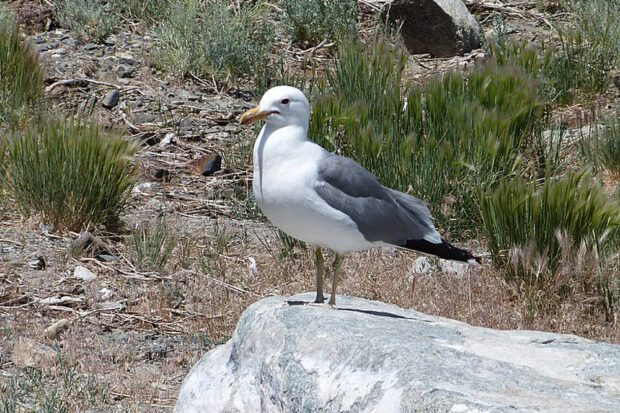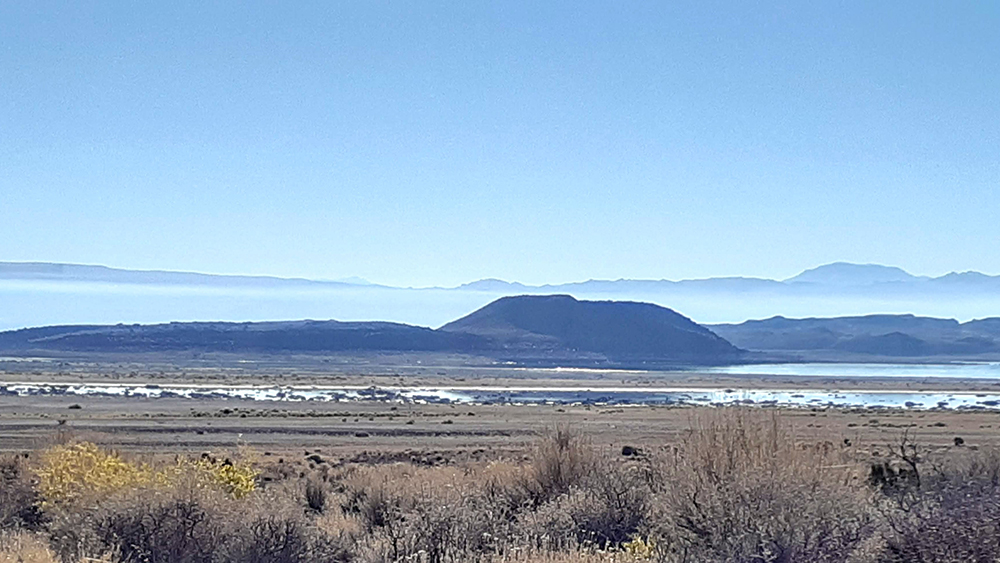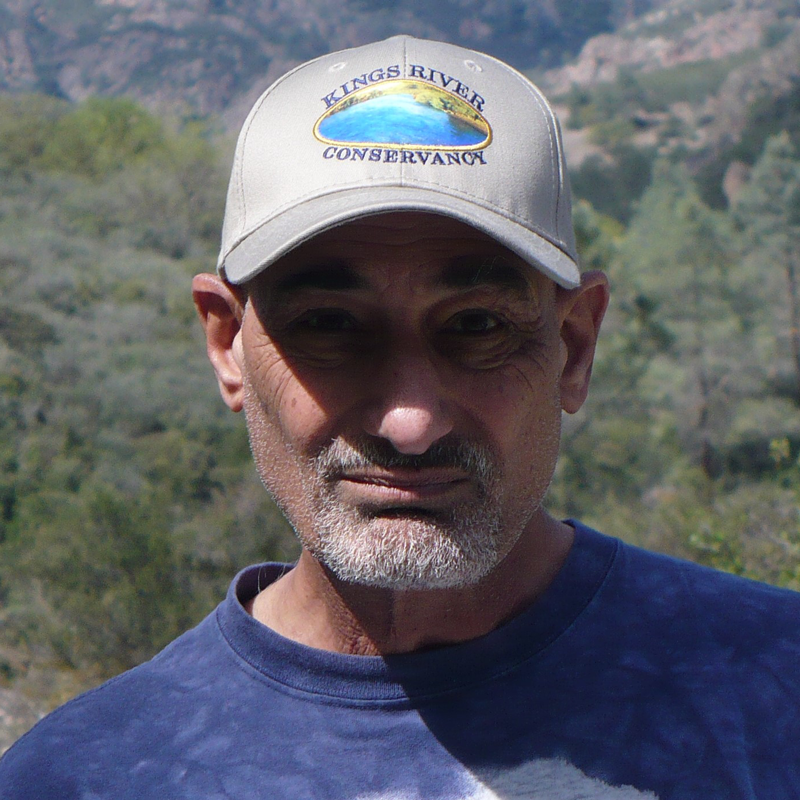
Mono Lake is an ancient saline lake and the centerpiece of the Mono Basin National Scenic Area. It is an important landscape for migrating and nesting birds. For the California gull population, it is a major breeding ground, and it is in trouble.
Recent research detected a shocking failure of chick hatching and survival in 2024. The science showed that the Los Angeles Department of Water and Power has been taking too much water, disrupting the food chain and leaving California gulls struggling to survive.
Since 1978, the Mono Lake Committee has waged a campaign to save Mono Basin and its unique ecosystem from excess water diversions to Los Angeles. In 1994, they convinced the State Water Board to mandate a healthy lake level of 6,392 feet elevation. And they mandated that it be achieved in 20 years.
But since then, the Los Angeles Department of Water and Power has maximized the amount of water it takes. That has left the lake level hovering at a harmful level of 6,383 feet. Bartshe Miller is policy director for the Mono Lake Committee. He says that’s 10 feet below where it should be, endangering the California gulls’ nesting areas.
“Mono Lake has historically been the second largest California gull colony in North America until recent years since the Los Angeles Department of Water and Power lowered Mono Lake and routed the gulls off of their original nest site on Negit Island in the middle of Mono Lake. The gulls have adapted to their new nesting habitat at Mono Lake where they’re struggling now to maintain their nesting success.”

Miller explains that when the lake is this low, coyotes can reach gulls’ nests. Another problem is that an invasive weed, Brassia, is beginning to cover nesting sites. He observes that California gulls are now nesting by the thousands in the south San Francisco Bay, where they never have in the past.
“The big threats to the California gulls at Mono Lake are the persistent or chronic low lake level not getting the lake up high enough to raise the level to protect against predation, to get the gulls to return to Negit where they have nested successfully in the past, and to basically take care of the weed problem that’s beginning to encroach on their nesting habitat.”
Another threat to all species from a chronically low lake level is a phenomenon called stratification. Miller describes it as a layer of fresh water after an abundant water year that keeps the lake’s nutrients deep in the lake and not available to the algae that feed the brine shrimp, that in turn feed the gulls at a critical time of their reproductive cycle.
“The lake ecosystem is suffering because it’s low, and that’s impacting the gulls. It’s impacting their food source because of the cycles of drought and big wet years that bring a lot of freshwater in the lake, stratify it and change the food dynamics in the lake dynamics, which didn’t exist when the lake was higher before diversions to Los Angeles.”
Does Los Angeles need all that water? Not really, according to Mayor Karen Bass, or the City Council, or even the residents. Last year, City leaders expressed support for the plight of Mono Lake and agreed to only divert the minimum amount of water from Rush Creek, the main fresh water source for Mono Lake.
But the Department of Water and Power had other plans and took as much as it legally could.
“LA as a city is at the forefront of water conservation,” says Geoff McQuilkin, the Mono Lake Committee’s executive director. “I mean, the right things are happening. There’s some impressive goals from the elected leaders about focusing on local supply, storm water, capture and water conservation.
“So the tools you need to protect Mono Lake, in other words, to have enough water for people in LA and for Mono Lake are not just out there. They’re already being implemented, but the Los Angeles Department of Water and Power doesn’t usually connect these two things together into changing its behavior at Mono Lake.”
The Department of Water and Power in a press statement declared the lake level “steady and encouraging.” A senior manager stated the lake level has trended up in the past 30 years, unlike other saline lakes in the west. But Mono Lake advocates replied that the data was weighted by rising lake trends in the 1990s and does not reflect current conditions.
Mono Lake is facing the worst California gull nesting crisis in 40 years of recordkeeping. If LA keeps diverting the maximum volume of water, it will keep getting worse. But what is concerning McQuilkin is the cumulation of all the various environmental traumas that are occurring.
He calls it a flashing red light that indicates halfway to a healthy lake level is not good enough. And he insists the harm goes well beyond the loss of gull nesting sites.
“That’s still a concern, but that wasn’t the issue last year. It was the health of the lake itself and not providing the food that the gulls needed. And so that issue goes well beyond the nests of California gulls.
“It goes to the food resources available for migrating Wilson’s phalaropes, redneck phalaropes [and] eared grebes, these species that really depend annually on their migratory journeys on Mono Lake.
“In fact, between Mono Lake and Great Salt Lake, you can have the vast majority of the North American population of these birds on one of those two lakes. So it gives us a real warning sign that Mono Lake’s not in good condition.”
Mono Lake advocates want the State Water Board to finally implement its own goal of a healthy lake level this year by mandating flows that will serve both Los Angeles and Mono Lake sustainably. Meanwhile, the LA Department of Water and Power plans to take the maximum amount of water again in the coming year.

